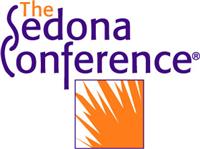 Correspondence to and from the accounts receivable (AR) department is critical to record and archive alongside invoices for historical reference.
Correspondence to and from the accounts receivable (AR) department is critical to record and archive alongside invoices for historical reference.
Miscommunications regarding receivables due to improper documentation will quickly and unnecessarily strain the client relationship while also impacting positive cash flow.
Reports provide insight into outstanding accounts, but they cannot provide the granular context to AR workflows. Too often, the context is found in the countless emails sent between your staff and your customers. How long, where and what are the best practices for these records to be kept?
Accounts Receivable Retention Requirements
Below is a table that illustrates retention requirements for accounts receivable documentation:
| Records | Retention Requirement (years) |
| Accounts, charged off | 7 |
| Accounts, payable ledger | 7 |
| Accounts receivable | 10 |
| Accounts receivable ledger | 10 |
| Balance sheets | 5 |
| Bank deposit records | 6 |
| Bank reconcilement papers | 8 |
| Bank statements | 8 |
| Bills collectible | 7 |
| Bills of sale of registered bonds | 3 |
| Bill stubs | 7 |
| Bonds canceled | 3 |
| Bonds registered | Permanently |
| Bonds, sales or transfer | 15 |
| Budget work sheets | 3 |
| Building permits | 20 |
| Capital stock bills of sale | Permanently |
| Capital stock certificates | Permanently |
| Capital stock ledger | Permanently |
| Capital stock transfer records | Permanently |
| Cashbooks | 25 |
| Cash receipts & disbursement records | 10 |
| Cash sales slips | 3 |
| Cash slips | 3 |
| Charge slips | 10 |
| Check records | 7 |
| Check register | 10 |
| Checks, dividend | 10 |
| Checks, expense | 10 |
| Checks, paid & cancelled | 9 |
| Checks, payroll | 7 |
| Checks, voucher | 6 |
| Checks, warrants | Permanently |
| Correspondence, accounting | 5 |
| Correspondence, credit & collection | 7 |
| Cost account records | 7 |
| Customer ledger | Permanently |
| Donations | 7 |
| Drafts paid | 8 |
| Earnings register | 3 |
| Entertainment, gifts & gratuities | 3 |
| Estimates, projections | 7 |
| Expense reports, departmental | 7 |
| Expense reports, employees | 7 |
| Financial statements, certified | Permanently |
| Financial statements, periodic | Permanently |
| Fixed capital records | Permanently |
| General cashbook | 25 |
| General journal | Permanently |
| General journal supporting papers | Permanently |
| General ledger | Permanently |
| Notes, canceled | 10 |
| Note ledgers | Permanently |
| Payroll register | 7 |
| Petty cash records | 3 |
| Plant ledger | Permanently |
| Profit & loss statements | Permanently |
| Property asset summary | 10 |
| Royalty ledger | Permanently |
| Salespeople commission reports | 3 |
| Stock ledger | Permanently |
| Tabulating cards & magnetic tape | 1 |
| Traveling auditor reports | 15 |
| Trial balance, accounts receivable | 3 |
| Trial balance sheets | Permanently |
| Uncollectible accounts | 7 |
| Work papers, rough | 2 |
We recommend that you have your CPA and your attorney review your AR records retention timetable before putting it into practice.
The Top 5 AR Challenges for Managing Correspondence
What if email correspondence was easily searchable alongside invoices, POs, backup and other AR related documents? Not only would the review process be more seamless for each cycle, but it also saves the AR team time, provides sales with conversation history, and enhances customer relations.
So with all these records, what are the five challenges for accounts receivable?
- 90% of all business correspondence is conducted via email and the email will frequently contain attachments.
- All correspondence with customers regarding account receivable should be considered a business record or document.
- Correspondence isn’t associated with the documents they reference – this can be done by invoice number.
- Classification, filing, and archiving email with current technologies is unorganized.
- Critical email correspondence isn’t integrated with existing back-end systems
Email Manager from CMA
With the right email management software the AR correspondence classification process is simple. Your AR team doesn’t have to launch another application on their desktop to document their AR correspondence. Instead, users can tag every email directly from their Microsoft Outlook interface with values pulled directly from your document management system so you can capture the account information, invoice number and any other customized information. Email Manager the automatically uploads all email correspondence in the thread, both before and after the tagged email to your document management system without any manual intervention.
What are you doing within your firm to help accounts receivable integrate, track and archive all of their email and attachments?


 Customer service reps
Customer service reps
